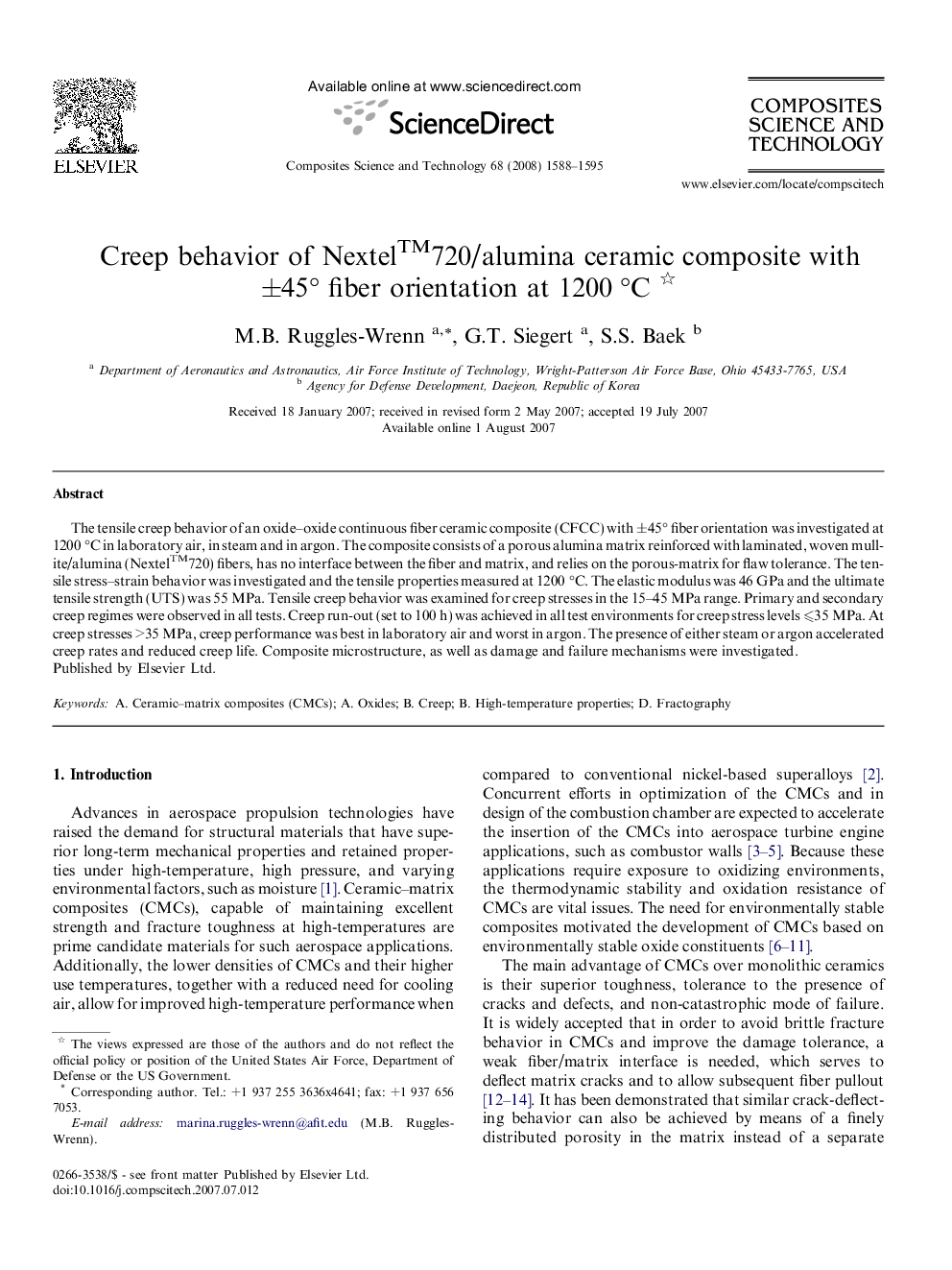| Article ID | Journal | Published Year | Pages | File Type |
|---|---|---|---|---|
| 822130 | Composites Science and Technology | 2008 | 8 Pages |
The tensile creep behavior of an oxide–oxide continuous fiber ceramic composite (CFCC) with ±45° fiber orientation was investigated at 1200 °C in laboratory air, in steam and in argon. The composite consists of a porous alumina matrix reinforced with laminated, woven mullite/alumina (Nextel™720) fibers, has no interface between the fiber and matrix, and relies on the porous-matrix for flaw tolerance. The tensile stress–strain behavior was investigated and the tensile properties measured at 1200 °C. The elastic modulus was 46 GPa and the ultimate tensile strength (UTS) was 55 MPa. Tensile creep behavior was examined for creep stresses in the 15–45 MPa range. Primary and secondary creep regimes were observed in all tests. Creep run-out (set to 100 h) was achieved in all test environments for creep stress levels ⩽35 MPa. At creep stresses >35 MPa, creep performance was best in laboratory air and worst in argon. The presence of either steam or argon accelerated creep rates and reduced creep life. Composite microstructure, as well as damage and failure mechanisms were investigated.
